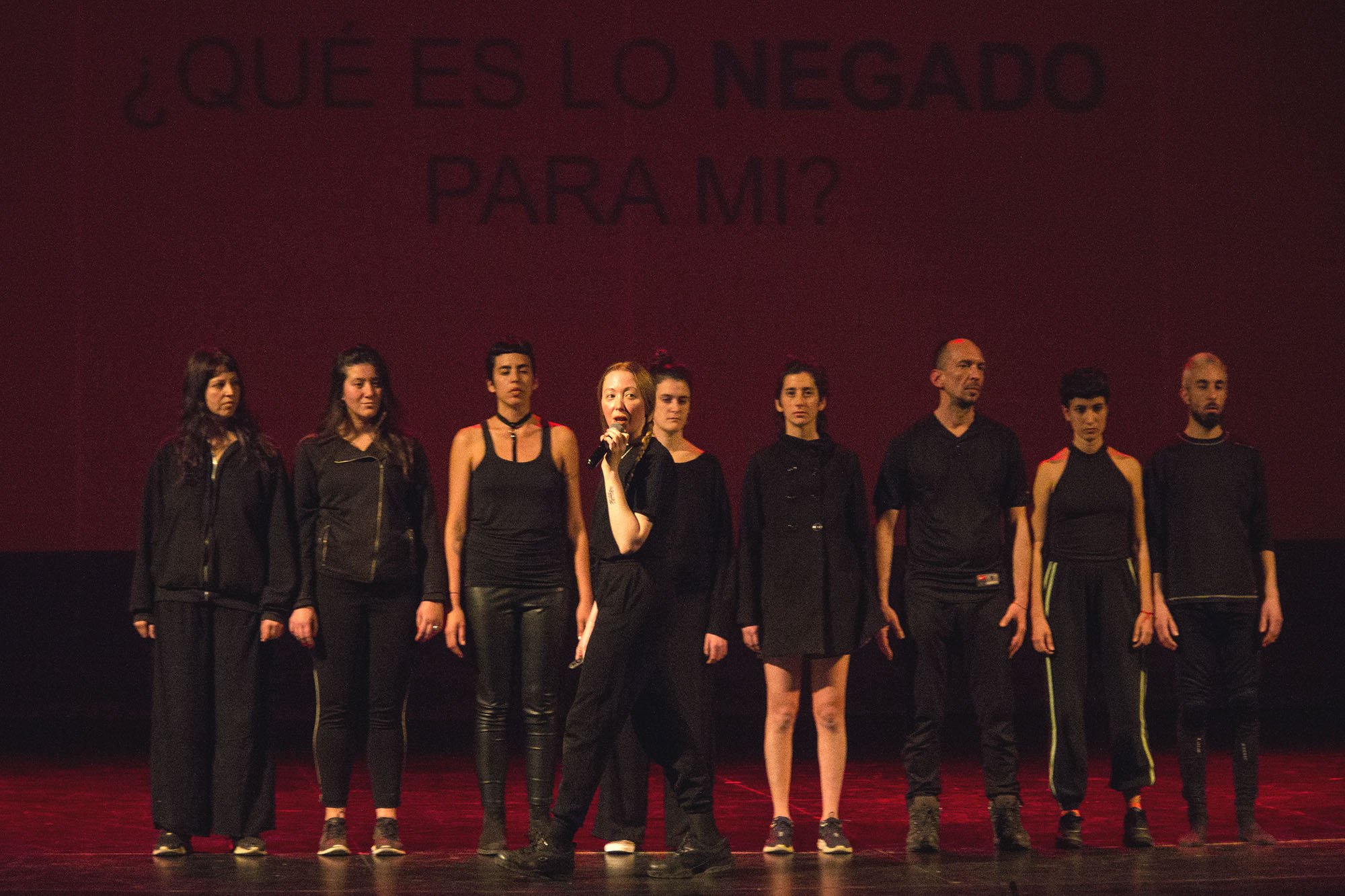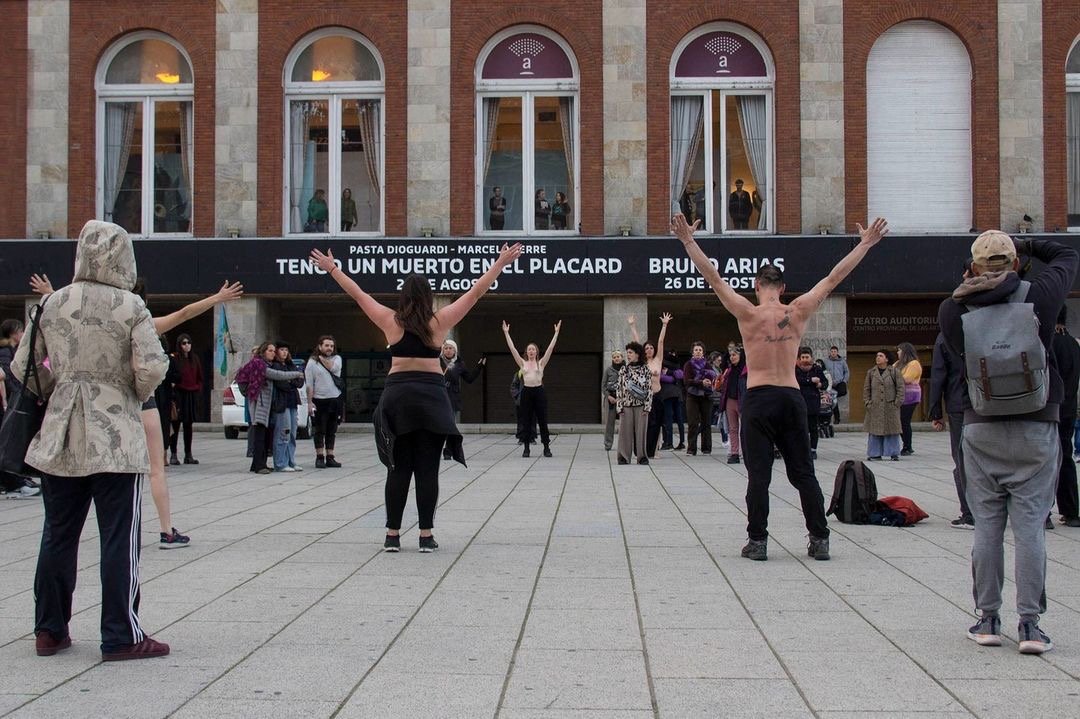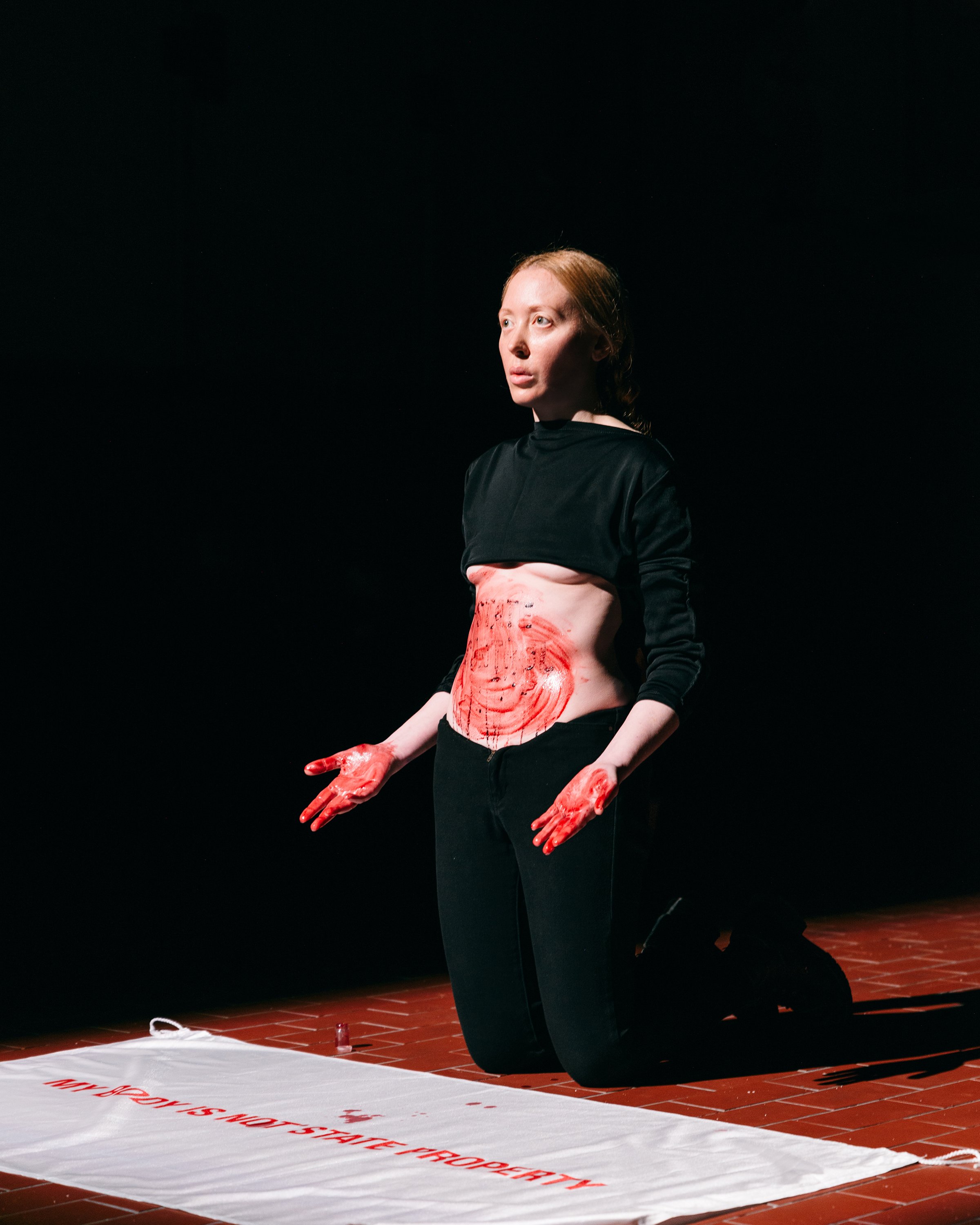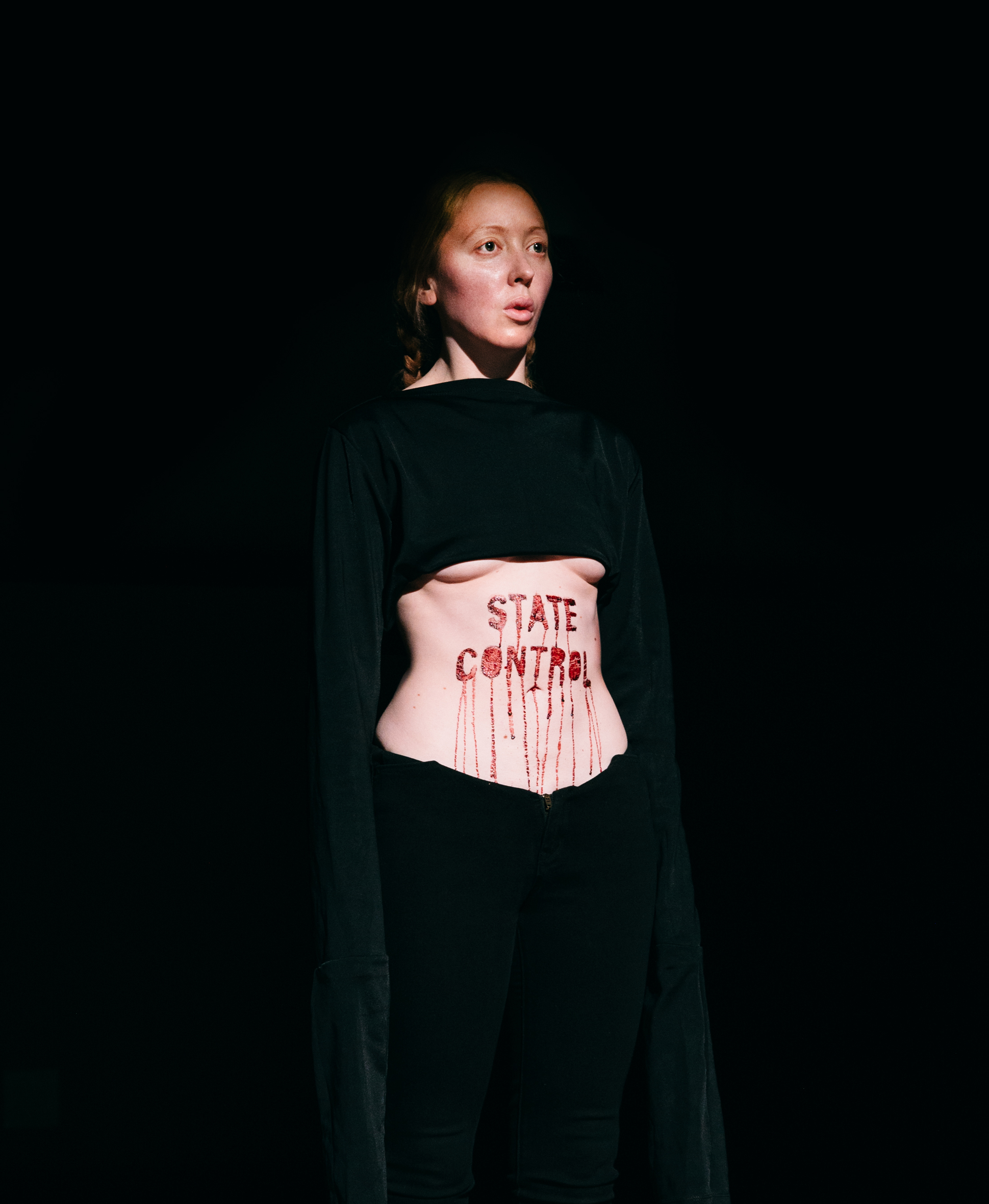Montserrat Miranda Ayejes in Conversation with Performance Artist Natacha Voliakovsky
Natacha Voliakovsky is an Argentinian performance artist based in New York. For over a decade, her pieces aimed to unveil and question social inequality, body autonomy and freedom.
Natacha’s work has been exhibited in museums and galleries all around the world including: The Momentary Museum, Arkansas; the Museum of American Art, Arizona; The Center for Performance Research, New York; and Usina del Arte in Buenos Aires, among others. Additionally, she created NVMethod, a training technique for performance art, and is the director of Argentina Performance Art, the first research platform on performance art in Argentina.
In this exclusive with MADE IN BED, Natacha talks about her career, how she approached performance art and her relationship with the body.
Natacha Voliakovsky.
Montserrat Miranda Ayejes: Why did you choose performance as a medium?
Natacha Voliakovsky: Since I first chose performance art as a medium, I have asked myself questions about it. I see the reflection of humanity on a living human body, and performance art is the language that best speaks about it. It is extreme, or at least for me because when you are doing a performance, the body reflects the limits of life to all who are watching. Returning my thoughts now to the initial question, “Why did I choose performance as a medium?” It is because I consider that performance is the only art that is real as life.
MMA: What is your artistic process?
NV: My work goes through different processes, but I don't of think any of them as ‘artistic’. Research on the topics I address plays a fundamental role. Regarding my body, my process involves physical training and medical and surgical consultations. Some methods are linked to survival techniques.
Physical preparation before performing a piece is key, so physical and psychological examination after a performance to understand what changes were produced in my body and feelings. After making a performance, perhaps in many cases due to the risks I take, there is stress before and after. I am never the same person again after doing a performance.
MMA: Your work often unveils themes that may generate discontent or discomfort but are crucial to thinking about inequality or social change. How do you prepare yourself to face those types of themes?
NV: I prepare myself mentally and physically to develop each specific action, but the themes I work with do not require preparation. The themes I work with are part of the reality that surrounds us. I think nobody is prepared to go through difficult moments in life, but we have no option other than to face them. But I can prepare myself for a performance because I choose that.
In my performances, I am the one who designs the piece and, at the same time, who surrenders to it. My performances work as a door that tries to open reflections on a specific matter and bring light to topics that are usually denied.
MMA: You were born in Argentina, and some of your more important pieces are strongly connected with Argentine culture and identity. How did moving to New York impact the way you think about your work?
NV: It was a drastic change, but it allowed me to understand how my work is perceived in New York. It is a very multicultural and cosmopolitan city, so not everyone understands things in the same way. In Argentina, there are customs that are general to the majority of the population, the things that “make us Argentines”. In New York, that feeling is constantly changing. But at the same time, the body is the body, so I try to simplify my performances and work in a more direct way. A smiling or painful face does not need culture or language. It only requires empathy to be understood.
MMA: In one of your latest projects, Claim The Denied with a Collective Body, you worked with the audience and the public space to rethink how minorities and relegated groups of society must behave within the public space. Can you share any details about the development of this work?
NV: Claim The Denied with a Collective Body is a project I am still developing. I work under the premise that what has been denied from our personal stories can be claimed and shared collectively in the public space.
I’ve been performing in public spaces for many years. That experience allowed me to understand how oppression is exercised over us, women, the non-binary and LGBTIQ+ community, people of colour and immigrants. Inspired by the Latin American popular demonstrations, I seek to give a new meaning to those concepts, stories, opinions, feelings, vulnerabilities and fears of those groups with the purpose of transforming, reclaiming and repairing each of those messages.
What I am looking to express is that collective action in public spaces can generate a type of healing process within us. I believe that collective efforts can help us to understand how oppression affects vulnerable groups and how it is manifested in different spaces.
Claim The Denied with a Collective Body. Performance Still.
MMA: Research is a fundamental part of your practice. You are the founder of Argentina Performance Art, the first platform dedicated to researching the history and theory of performance in Argentina. Can you tell us more about this project?
NV: Argentina Performance Art (APA) is the first digital archival platform of performance art in Argentina and of free access.
APA looks throughout the history of performance art, its main exponents, emblematic works and its current status in Argentina. The main goal of the platform is to promote the understanding of this art through historical and theoretical lenses, to contribute to the constantly changing definition of performance art, and help increase the visibility of performance art and artists.
APA arises from the need for an integrated source with verifiable and detailed information on performance art in Argentina. The platform received a grant from the Office of Cultural Affairs of the Ministry of Culture of the Government of the City of Buenos Aires in 2018, 2020, and 2021. It has also received the Metropolitan Creation Fund from the City of Buenos Aires, Argentina and support from private donors and institutions.
MMA: What are the biggest challenges you have faced as a performance artist?
NV: The biggest challenge I constantly face is my own body. The body of a performer, like the body of an athlete, gets tired, gets old, and carries the wounds of the actions. No one talks about it, but we all experience it.
The career path of a performance artist is not as defined as other professions. A boxer, for example, knows when he should start boxing professionally to crown his career and then retire. The same happens in other sports like soccer, tennis, or rugby, but not with who performs because our production is very different.
In my case, my body is constantly being pushed to the limit and the lack of precise regulation in this profession and an art market that even today has a hard time understanding how to sell this type of work. Also, it is thought that acquiring a performance piece generates a lack of economic recognition for performance artists if we compare them with visual artists or athletes.
MMA: As a performance artist, how do you see the scene of the performance in the art world?
NV: The performance scene is very dynamic. In recent years, driven by post-pandemic hyperconnectivity, some processes have accelerated. Before the pandemic, only a small audience could enjoy a performance. It was an event that only occurred live and excluded anyone who could not be present there. Today you can buy performance videos to watch online - you simply pay for the rights to watch without the need to purchase the piece. Online performances are also now being produced, allowing audiences from different times and countries to access them.
Nowadays, there are larger performance pieces in private collections, museums and art fairs. Even though there is still work to do as there are still not enough pieces and the market price is still very low, I can notice a change. Although I feel that audiences are more open to participating, they also consume in a faster way, which leaves out many types of durational performance and introspection.
MMA: In 2021, you made a site-specific performance at The Momentary Museum in Arkansas, and in 2022 you had a solo show at The Argentine Consulate of New York. What other projects are on the horizon for this year?
NV: I am currently doing a fellowship at SU-CASA residence from the Lower Manhattan Cultural Council. I am specifically working on aspects of what is denied on a social and individual level among older adults. In April, I exhibited a new series of video performances at Fundación Cazadores in Argentina for the first time. On May 19, 2023, I made a new performance at Grace Exhibition Space, New York. I am also working on a durational action to present at the LATEA NY Theater later this year, and I’m working on a book as another way of recording performance.
Also, after ten years, I returned to drawing, a medium that marked my beginnings as an artist. I believe drawing can nourish my performances, and I would love to exhibit them.
Many thanks to Natacha Voliakovsky on behalf of MADE IN BED.
To learn more about Natacha’s practice, follow her on Instagram, or head to her website.
Monsterrat Mirana Ayejes
Contributing Writer, MADE IN BED









